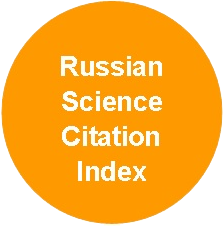The Composition of Phytocenoses in Forest Burnt Areas of Buryatia
DOI:
https://doi.org/10.37482/0536-1036-2025-1-134-144Keywords:
burnt area, young growth, undergrowth, living ground cover, species composition, the Republic of BuryatiaAbstract
Data on the species composition and abundance of woody and shrubby vegetation in burnt areas of southern Transbaikalia are presented. The object of the study is a large burnt area in the forest fund of the Khorinsky forestry of the Republic of Buryatia. Phytocenoses are located on sandy soils, on various relief elements at an altitude of 676 to 845 m above sea level – from the foothills to the tops of gentle hills. The vegetation of all forest components has been recorded along free routes on circular survey sites with a radius of 1,785 m. Adjacent to each other, they have formed a counting tape. At least 30 survey plots have been established at each experimental site. It has been established that the vegetation composition and the proportion of species at the study sites differ. In the burnt areas 14–15 years old, the presence of 15–18 plant species in the living ground cover has been noted. The maximum projective cover – more than 5 % – is found in 6 species: Vaccinium vitis-idaea L., Calamagrostis arundinacea (L.) Roth, Carex pseudocyperus L., Avenella flexuosa (L.) Drejer, Lichenes sp. L., Bryidae sp. Engl. 6 species have been identified in the undergrowth, the most prevalent being Sorbus aucuparia subsp. Sibirica (Hedl.) Krylov, Viburnum burejaeticum Regel & Herder and Juniperus sibirica Burgsd. It has been shown that the range of variation in the number of undergrowth by study objects has been 190–673 pcs/ha. The young growth is formed by Scots pine in numbers ranging from 27 to 62 pcs/ha. It has been indicated that the main reason for the small number of self-seeding pine trees has been the extreme soil surface temperatures in the summer. The maximum temperature of 63 °C has been recorded in the mineralized part of the soil, which causes protein denaturation in the endosperm and loss of seed germination. Emphasis is placed on the large proportion of the mineralized surface as a consequence of wind and water erosion. In some experimental sites, the mineralized surface area has exceeded 18 %. The results obtained can be used in the design of reforestation measures, in geobotanical research and in the educational process.
Downloads
References
Баханова М.В., Кисова С.В., Коновалова Е.В., Гладинов А.Н., Содбоева С.Ч. Искусственное и естественное лесовосстановление на гарях с учетом особенностей природно-климатических условий Республики Бурятия: метод. указ. Улан-Удэ: Бурят. гос. с.-х. акад. им. В.Р. Филиппова, 2022. 47 с. Bakhanova M.V., Kisova S.V., Konovalova E.V., Gladinov A.N., Sodboeva S.Ch. Artificial and Natural Reforestation of Burnt Areas Taking into Account the Peculiarities of Natural and Climatic Conditions of the Republic of Buryatia: Instruction Notes. Ulan-Ude, Buryat State Agricultural Academy named after V.R. Filippov, 2022. 47 p. (In Russ.).
Беляева Н.В., Сергеева А.С., Кази И.А. Формирование подроста хвойных пород на гарях в зависимости от парцеллярной структуры фитоценоза // Актуал. проблемы лесн. комплекса. 2020. № 58. С. 6–11. Beliaeva N.V., Sergeeva A.S., Kazi I.A. Formation of Undergrowth of Coniferous Species in Burning Areas Depending on the Partial Structure of Phytocenosis. Aktual’nye problemy lesnogo kompleksa, 2020, no. 58, pp. 6–11. (In Russ.).
Бузыкин А.И. Сосновые леса восточного Прибайкалья и возобновление в них // Лесовосстановительные исследования в лесах Сибири. 1965. № 2. С. 3–15. Buzykin A.I. Pine Forests of the Eastern Baikal Region and Their Restoration. Lesovosstanovitel’nye issledovaniya v lesakh Sibiri, 1965, no. 2, pp. 3–15. (In Russ.).
Гаврилова О.И., Колганов Е.С., Пак К.А. Оценка успешности самовозобновления сосны на гари // Лесотехн. журн. 2020. Т. 10, № 4(40). С. 142–149. Gavrilova O.I., Kolganov E.S., Pak K.A. Evaluation of Success of Pine Self-Renewal Forests on Burnt-out Areas. Lesotekhnicheskij zhurnal = Forestry Engineering Journal, 2020, vol. 10, no. 4(40), pp.142–149. (In Russ.). https://doi.org/10.34220/issn.2222-7962/2020.4/11
Гордей Н.В., Тегленков Е.А. Исследование постпирогенных лесовозобновительных процессов в сосновых насаждениях // Тр. БГТУ. Сер. 1: Лесн. хоз-во. 2015. № 1(174). С. 54–57. Gordey N.V., Teglenkov E.A. Research of Post Pyrogenic Reforestation Processes in Pine Plantations. Trudy BGTU. Seriya 1: Lesnoe khozyajstvo = Proceedings of BSTU. Series 1: Forestry. 2015, no. 1(174), pp. 54–57. (In Russ.).
Грязькин А.В., Беляева Н.В., Кази И.А., Ефимов А.В., Сырников И.А. Особенности роста подроста сосны под пологом древостоев на сухих бедных почвах // Research Science (Banská Bystrica). 2019. № 8. С. 3–6. Gryaz’kin A.V., Belyaeva N.V., Kazi I.A., Efimov A.V., Syrnikov I.A. Features of the Growth of Pine Undergrowth under the Canopy of Forest Stands on Dry Poor Soils. Research Science (Banská Bystrica), 2019, no. 8, pp. 3–6. (In Russ.).
Ковалева Н.М., Жила С.В., Иванова Г.А. Формирование живого напочвенного покрова на начальной стадии пирогенной сукцессии в сосняках нижнего Приангарья // Хвойные бореал. зоны. 2012. Т. ХХХ, № 3–4. С. 265–269. Kovaleva N.M., Zhila S.V., Ivanova G.A. Formation of Living Ground Cover at the Initial Stage of Pyrogenic Succession in Pine Forests of the Lower Angara Region. Khvoinye boreal’noi zony = Conifers of the Boreal Area, 2012, vol. XXX, no. 3–4, pp. 265–269. (In Russ.).
Комарова Т.А. Динамика продуктивности травянистых растений в ходе послепожарных сукцессий в лесах южного Сихотэ-Алиня // Ботан. журн. 1996. Т. 81, № 6. С. 50–62. Komarova T.A. Dynamics of Herbaceous Plant Productivity during Post–Fire Successions in the Forests of Southern Sikhote-Alin. Botanicheskij zhurnal, 1996, vol. 81, no. 6, pp. 50–62. (In Russ.).
Патент 2084129 РФ, МКИ С 6 А 01 G 23/00. Способ учета подроста: № 94022328/13: заявл. 10.06.94: опубл. 20.07.97 / А.В. Грязькин. Gryaz’kin A.V. The Method of Accounting for Undergrowth. Patent RF no. 2084129, 1997. (In Russ.).
Плантариум. Растения и лишайники России и сопредельных стран: открытый онлайн атлас и определитель растений. Режим доступа: https://www.plantarium.ru/ (дата обращения: 12.01.24). Plantarium. Plants and Lichens of Russia and Neighbouring Countries: Open Online Galleries and Plant Identification Guide. (In Russ.).
Побединский А.В. Сосновые леса Средней Сибири и Забайкалья: моногр. М.: Наука, 1965. 268 с. Pobedinskij A.V. Pine Forests of Central Siberia and Transbaikalia: Monograph. Moscow, Nauka Publ., 1965. 268 p. (In Russ.).
Санникова Н.С., Санников С.Н., Кочубей А.А., Петрова И.В. Естественное возобновление сосны на гарях в лесостепи Западной Сибири // Сиб. лесн. журн. 2019. № 5. С. 22–29. Sannikova N.S., Sannikov S.N., Kochubei A.A., Petrova I.V. Natural Pine Regeneration on Burns in Forest-Steppe of Western Siberia. Sibirskij lesnoj zhurnal = Siberian Journal of Forest Science, 2019, no. 5, pp. 22–29. (In Russ.). https://doi.org/10.15372/SJFS20190503
Boxall P.C., Murray G., Unterschultz J.R., Boxall P.C. Non-Timber Forest Products from the Canadian Boreal Forest: an Exploration of Aboriginal Opportunities. Journal of Forest Economics, 2003, vol. 9, no. 2, pp. 75–96. https://doi.org/10.1078/1104-6899-00027
Cioacă L., Enescu C.M. Trends in the Evolution of Harvesting of Non-Wood Forest Products in Romania. Research Journal of Agricultural Science, 2018, vol. 50(4), pp. 82–86.
Enescu C.M. Which are the Most Important Non-Wood Forest Products in the Case of Ialomița County. AgroLife Scientific Journal, 2017, vol. 6, no. 1, pp. 98–103.
Hille M., den Ouden J. Fuel Load, Humus Consumption and Humus Moisture Dynamics in Central European Scots Pine Stands. International Journal of Wildland Fire, 2005, vol. 14, no. 2, pp. 153–159. https://doi.org/10.1071/WF04026
McCarthy N., Bentsen N.S., Willoughby I., Balandier P. The State of Forest Vegetation Management in Europe in the 21st Century. European Journal of Forest Research, 2011, vol. 130, pp. 7–16. https://doi.org/10.1007/s10342-010-0429-5
McRae D.J., Conard S.G., Ivanova G.A., Sukhinin A.I., Baker S.P., Samsonov Y.N., Blake T.W., Ivanov V.A., Ivanov A.V., Churkina T.V., Hao W.M., Koutzenogij K.P., Kovaleva N. Variability of Fire Behavior, Fire Effects, and Emissions in Scotch Pine Forests of Central Siberia. Mitigation and Adaptation Strategies for Global Change, 2006, vol. 11, pp. 45–74. https://doi.org/10.1007/s11027-006-1008-4
Nygren A., Lacuna-Richman C., Keinänen K., Alsa L. Ecological, Socio-Cultural, Economic and Political Factors Influencing the Contribution of Non-Timber Forest Products to Local Livelihoods: Case Studies from Honduras and the Philippines. Small-Scale Forest Economics, Management and Policy, 2006, vol. 5, pp. 249–269. https://doi.org/10.1007/s11842-006-0013-5
Sukhbaatar G., Nachin B., Purevragchaa B., Ganbaatar B., Mookhor K., Tseveen B., Gradel A. Which Selective Logging Intensity is Most Suitable for the Maintenance of Soil Properties and the Promotion of Natural Regeneration in Highly Continental Scots Pine Forests?–Results 19 Years after Harvest Operations in Mongolia. Forests, 2019, vol. 10, no. 2, art. no. 141. https://doi.org/10.3390/f10020141
Downloads
Published
How to Cite
Issue
Section
License
Copyright (c) 2025 Б.Б. Климов, А.В. Грязькин, О.И. Гаврилова (Автор)

This work is licensed under a Creative Commons Attribution 4.0 International License.












